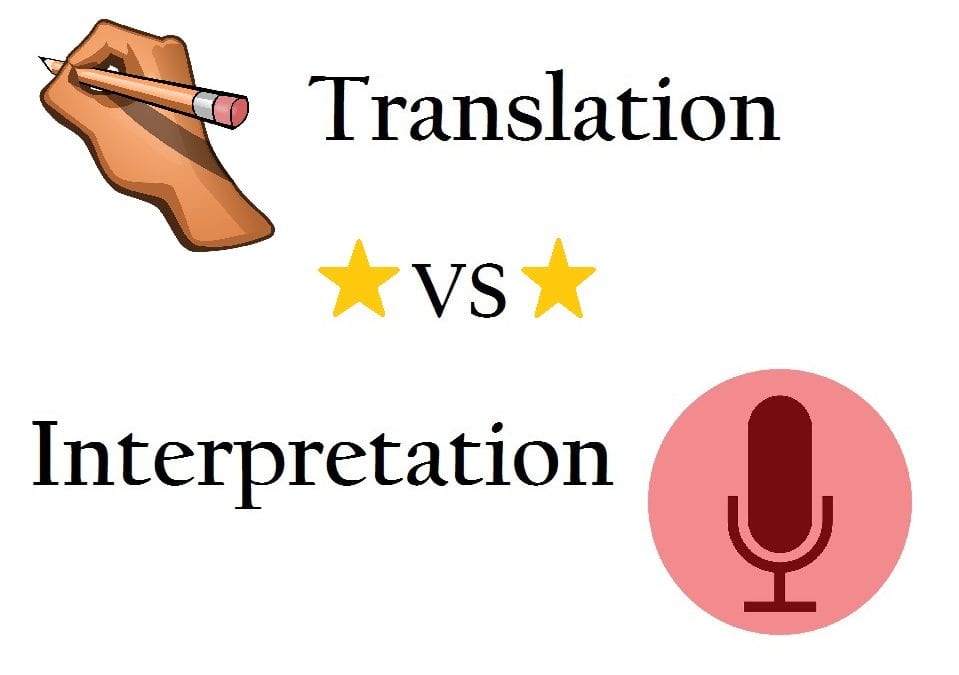
To develop, the worldwide business you need to interact with the global crowd in their local language as fluently as a local organization would. This may include interpretation of your content, Translation, or both. As firmly related to language fields, the two procedures are regularly used interchangeably—yet both have their particular tasks to carry out in specific circumstances. How would you realize which is ideal?
The distinction between translation and interpretation lies in each service method: interpreters translate orally, while translators translate in writing. Additionally, both of them have some common features, for example, deep social understanding and linguistic fluency, expert knowledge on the topic, and ability to explain effectively. However, understanding what are the differences between an interpreter and a translator will be helpful when opting between the two.
The distinction between translation and Interpretation as follows
Interpreting
In spite of mainstream thinking, interpreting isn’t in the translation of the same word of a verbally expressed message.
Rather, it’s all about rewording or rephrasing. Interpreters need to transpose the source (language to be translated) setting, safeguarding its subject but rephrasing expressions, idioms, and other keywords in the manner that the required audience clearly understands. Interpreters may even be required to go about as strategic mediators in specific conditions, and frequently should be great open speakers. That, however, they need to convey their message in a flash—either as one with (synchronous) or following (sequential) with no assistance from scripts, word references, or other reference materials. An interpreter’s most important assets are experience, a great memory, and fast reflexes.
Interpreters rely on projects involving live translation: Conferences and meetings, medical-related appointments, legal procedures, live TV conferences, communication via gestures, etc.
Translation
Maybe the greatest distinction among interpreters and translators, at that point, is that most translators use Computer-aided tools in their work. The translation is the communication of the meaning of source-language information or data using the same target-language data. As the translator experiences every part of the content, they may refer to glossaries and style guides for quality assurance. At long last, they’ll pass the translation to another language specialist to do proofreading. Then they will convert the final text back into its old configuration guaranteeing the nearest possible match (keeping in mind not to lose the local flavour of the original text).
Whereas interpreters have expertise in spoken communication, translators need excellent writing skills. Translators deal with any data in composed structure: Websites, print, video captions, programming, media, etc. So the contrasts among translators and interpreters are tremendous. To summarize, here are the three fundamental differentiations to think about when figuring out which administration is most appropriate to a venture:
Delivery
A key distinction between translation and interpreting is in the planning. Interpretation happens on the spot. The procedure can happen face to face, via telephone, or through video. Translation, then again, can happen long after the source content is made. This gives translators plentiful time to use advances and reference materials to create precise, top-notch translations.
Accuracy
Interpretation requires a lower level of exactness to translation. Interpreters focus on the continuation of the flow, that they try to accomplish in a live setting.—,. Whereas a translator has to give much more emphasis on accuracy, exactness and keeping the traits of the original text intact.
Intangibles
Making representations, analogies and idioms that resonate with the target group is a challenge that both interpreters and translators face. Over this, interpreters must catch tone, inflections, voice quality, and other exceptional components of the expressed word and afterward covey these to the audience.
In both cases, one thing that remains common is the involvement of absolute experts in the business. For example, professional companies like Translation Light, which are ISO 9001:2015 certified and follow due to quality processes to execute even the smallest jobs, regularly work with linguist professionals having a minimum of 6-8 years of experience in their respective fields. All these aspects ensure that the end consumer gets the desired product quality at reasonable charges.
Now that you know the differences between an interpreter and a translator, you’re prepared to investigate each based upon your individual necessities.

Recent Comments